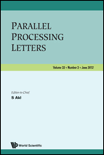
Parallel Processing Letters
Scope & Guideline
Driving Excellence in Parallel Processing Research.
Introduction
Aims and Scopes
- Parallel Algorithms and Their Optimization:
Research on the design and optimization of parallel algorithms for a variety of computational tasks, including matrix operations, scheduling, and network analysis. - Graph Theory and Network Analysis:
Exploration of graph theory concepts applied to network structures, including connectivity, routing, and communication protocols. - Distributed Computing Techniques:
Studies focusing on distributed systems and their architectures, emphasizing the use of parallel processing for efficient computation and resource management. - Machine Learning and Artificial Intelligence Applications:
Integration of machine learning with parallel processing techniques to enhance the performance of data-driven applications, particularly in neural networks. - Performance Evaluation and Benchmarking:
Evaluation of performance metrics for parallel processing systems, including energy efficiency, reliability, and scalability.
Trending and Emerging
- Quantum Computing and Probabilistic Methods:
Increased focus on quantum-inspired algorithms and probabilistic approaches for data corruption detection, underscoring the relevance of quantum computing in parallel processing. - Machine Learning Integration:
A notable rise in publications that combine machine learning with parallel processing, particularly in applications such as neural networks and optimization problems. - Big Data and Combinatorial Optimization:
Growing interest in leveraging parallel processing for big data applications, particularly in combinatorial optimization, which is critical for data-intensive tasks. - Distributed Architecture for IoT and Critical Infrastructure:
Emerging themes in distributed computing architectures for the Internet of Things (IoT) and performance analysis to protect critical infrastructure, highlighting the importance of security and efficiency. - Advanced Graph Algorithms:
A trend towards the development of advanced algorithms for graph-related problems, including new approaches to connectivity and routing in complex networks.
Declining or Waning
- Traditional Hardware Optimization Techniques:
Research focused on classical hardware optimization methods has decreased, as newer approaches leveraging software and hybrid solutions gain prominence. - Basic Theoretical Constructs in Parallel Processing:
While foundational theories remain important, the journal has shifted towards more applied and practical aspects, leading to a reduction in purely theoretical papers. - Low-Level Programming Techniques:
Interest in low-level programming techniques for parallel processing has waned in favor of higher-level abstractions and frameworks that simplify development and enhance productivity.
Similar Journals

ADCAIJ-Advances in Distributed Computing and Artificial Intelligence Journal
Catalyzing Collaboration in Computing and AIADCAIJ - Advances in Distributed Computing and Artificial Intelligence Journal, published by EDICIONES UNIV SALAMANCA, is an esteemed academic journal dedicated to the rapidly evolving fields of artificial intelligence, computer networks, and distributed computing. With its commitment to Open Access since 2012, the journal ensures that cutting-edge research is accessible to a global audience, fostering collaboration and innovation in the scientific community. Based in Spain, ADCAIJ is making significant strides with its current status in the Q3 quartile across various domains, including Artificial Intelligence and Information Systems. Despite its emerging status, it ranks with great potential, providing a platform for researchers to share their findings and contribute to advancements in these critical areas. The journal not only facilitates knowledge dissemination but also encourages interdisciplinary approaches that are crucial for tackling contemporary challenges. As it continues to expand its influence from 2019 through 2024, ADCAIJ is poised to play a key role in shaping future research trajectories and technological applications in its field.
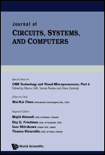
JOURNAL OF CIRCUITS SYSTEMS AND COMPUTERS
Advancing the Frontiers of Circuits and ComputingJOURNAL OF CIRCUITS SYSTEMS AND COMPUTERS is a pivotal publication in the fields of Electrical and Electronic Engineering as well as Hardware and Architecture, published by World Scientific Publishing Co. Pte Ltd in Singapore. With an ISSN of 0218-1266 and an E-ISSN of 1793-6454, this journal has contributed significantly to the discourse surrounding innovative research and technological advancements since its inception in the late 1990s. It currently holds a Q3 ranking in both relevant categories, reflecting its competitive stature and providing researchers, professionals, and students a substantial platform for disseminating findings. The journal covers a diverse range of topics, focusing on the design, analysis, and application of circuits, systems, and advanced computing technologies. Authors benefit from a rigorous peer-review process, ensuring high-quality publications that drive the field forward. The journal's commitment to excellence underscores its importance in fostering academic collaboration and knowledge exchange, making it a vital resource for anyone dedicated to advancing the domains of electrical engineering and computer science.
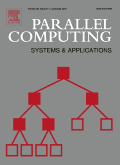
PARALLEL COMPUTING
Fostering Collaboration in Cutting-Edge Computational Research.PARALLEL COMPUTING is a premier academic journal dedicated to advancing research in the dynamic and rapidly evolving field of parallel and distributed computing. Published by Elsevier, this journal has been at the forefront of technological advancements since its inception in 1984, engaging a global audience and fostering a rich dialogue among researchers and practitioners alike. With an impressive impact factor that reflects its relevance in the academic community, PARALLEL COMPUTING is currently categorized in multiple fields, including Artificial Intelligence (Q3), Computer Graphics and Computer-Aided Design (Q2), and others, highlighting its multidisciplinary scope. As a vital resource, the journal features cutting-edge research articles, reviews, and methodologies that drive innovation across various domains such as hardware architecture, software engineering, and theoretical computer science. Although it does not offer open access, the journal's traditional publication model ensures rigorous peer review and high scholarly standards. Researchers, professionals, and students are encouraged to engage with the latest findings and contribute to the journal's commitment to excellence in parallel computing.

Scalable Computing-Practice and Experience
Connecting Researchers and Practitioners in ComputingScalable Computing - Practice and Experience, published by UNIV VEST TIMISOARA, stands as a significant platform for research and discourse in the realm of computer science, particularly focusing on practical applications and scalability in computing systems. Established in 2005, it aims to bridge the gap between theoretical advancements and real-world implementations, catering to a diverse readership that includes researchers, professionals, and students who are keen on exploring innovative computing practices. With an H-index reflective of its contribution and a Category Quartile of Q3 in Computer Science (miscellaneous), the journal offers a rich repository of knowledge, albeit currently not open access, from its base in Timisoara, Romania. The journal is included in Scopus rankings, underscoring its relevancy with a current rank of #144 out of 232 in the General Computer Science category, placing it in the 38th percentile. It invites contributions that expand the horizons of scalable computing methodologies and experiences, making it a vital resource for those engaged in this rapidly evolving field.
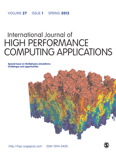
INTERNATIONAL JOURNAL OF HIGH PERFORMANCE COMPUTING APPLICATIONS
Unlocking the Potential of High-Performance TechnologiesThe INTERNATIONAL JOURNAL OF HIGH PERFORMANCE COMPUTING APPLICATIONS, published by SAGE PUBLICATIONS LTD, is a leading academic journal dedicated to the advancement of high-performance computing in various domains, including hardware, software, and theoretical frameworks. With a strong commitment to disseminating innovative research since its inception in 1987, the journal plays a pivotal role in bridging the gap between theoretical advancements and practical applications in computing. Featuring an impressive impact across its categories—ranked Q2 in Hardware and Architecture, Software, and Theoretical Computer Science—this journal appeals to a diverse audience of researchers and professionals seeking to explore the latest developments and applications in high-performance computing. The journal is accessible via various open access options, ensuring that cutting-edge research is available to a wide readership, fostering collaboration and knowledge-sharing within the global computing community. Scholars interested in pushing the boundaries of technology and its applications will find this journal an invaluable resource as it continues to evolve towards its projected convergence years, extending its influence through 2024 and beyond.
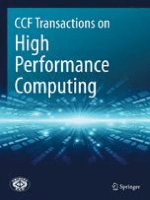
CCF Transactions on High Performance Computing
Advancing the Frontiers of High-Performance ComputingCCF Transactions on High Performance Computing, published by SPRINGERNATURE, is an esteemed academic journal dedicated to advancing research in the field of high-performance computing. With an ISSN of 2524-4922 and E-ISSN of 2524-4930, this journal provides a platform for disseminating innovative findings, methodologies, and technologies that shape computational practices within various domains. Operating from Germany, it serves a global audience, reinforcing its impact through an impressive categorization in the Q3 quartile across multiple fields, including Computer Science Applications and Information Systems. The journal, which covers research from 2019 to 2024, plays a crucial role in bridging gaps between theory and practical implementation in hardware architecture and software systems. Although it is not an open-access journal, its contributions are invaluable for researchers, professionals, and students invested in the continuous evolution of high-performance computing. With Scopus rankings that highlight its relevance and influence in the academic community, CCF Transactions on High Performance Computing remains a key resource for the latest developments in this dynamic and rapidly evolving discipline.
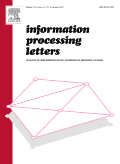
INFORMATION PROCESSING LETTERS
Empowering the Next Generation of Computational ThinkersINFORMATION PROCESSING LETTERS, published by ELSEVIER and with an ISSN of 0020-0190, is a prominent academic journal that serves as a vital resource in the fields of Computer Science, Information Systems, and Signal Processing, among others. As evidenced by its Q3 ranking across various categories in 2023, including Computer Science Applications and Theoretical Computer Science, it provides a rigorous platform for the dissemination of innovative research and theoretical developments. Researchers and professionals can delve into a wide array of subjects pertinent to information processing, contributing to advancements in technology and data management. Although it does not offer Open Access options, the journal maintains an influential presence in scholarly discourse, making it a crucial reference for those engaged in computational innovations and system optimizations. With coverage from 1971 to 2025, it continues to be integral for both seasoned academics and emerging scholars.

International Journal of Computer Mathematics- Computer Systems Theory
Transforming Ideas into Mathematical SolutionsInternational Journal of Computer Mathematics - Computer Systems Theory, published by Taylor & Francis Ltd, is a vital resource in the fields of computational mathematics and computer systems theory. With an ISSN of 2379-9927 and E-ISSN 2379-9935, this journal has established a prominent presence in academia since its inception in 2016. It is categorized in the Q3 quartile for both Computational Mathematics and Computational Theory in 2023, reflecting its impact and contribution to the scholarly discourse within these domains. The journal’s Scopus rankings further emphasize its academic relevance, placing it in the 38th and 33rd percentiles in their respective categories. International Journal of Computer Mathematics aims to disseminate innovative research findings, methodologies, and theoretical advancements, making it an essential publication for researchers, professionals, and students looking to deepen their understanding of computational methods and applications. Although it currently does not offer open access, the journal continues to provide insightful contributions to the scientific community, fostering the evolution of computational sciences.
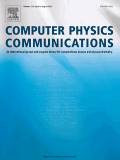
COMPUTER PHYSICS COMMUNICATIONS
Navigating the Intersection of Technology and PhysicsCOMPUTER PHYSICS COMMUNICATIONS is a premier journal published by Elsevier, renowned for its contributions to the fields of computer science and physics. With an ISSN of 0010-4655 and an E-ISSN of 1879-2944, this journal has established itself over the decades, beginning its journey in 1969 and running through 2025, fostering innovative research and discussions. Recognized for its high impact, it sits in the Q1 quartile for both Hardware and Architecture as well as for miscellaneous Physics and Astronomy, underscoring its significance in the academic community. The journal's Scopus rankings further reflect its prestige, with a rank of #12 out of 177 in Computer Science and #18 out of 243 in Physics and Astronomy, placing it in the top percentiles of its field. Although it does not currently offer Open Access options, COMPUTER PHYSICS COMMUNICATIONS remains a vital resource for researchers, professionals, and students seeking to advance their knowledge and contribute to the ongoing dialogue in computer physics and its myriad applications.

Computer Science Journal of Moldova
Exploring New Frontiers in Computational ExcellenceComputer Science Journal of Moldova, published by the Institute of Mathematics and Computer Science Academy, serves as a pivotal platform for disseminating research in the field of computer science since its inception in 1993. With a focus on a diverse range of subjects, including Artificial Intelligence, Computational Mathematics, and Software Engineering, this open access journal aims to foster innovation and collaboration among researchers, students, and industry professionals. Despite its current positioning in the lower quartiles as per the latest Scopus rankings, the journal remains committed to enhancing the visibility of regional research and addressing contemporary challenges through scholarly contributions. The journal’s open access model ensures that knowledge is freely available, promoting broader readership and impact within the international academic community. As it moves through the converged years from 2019 to 2024, the Computer Science Journal of Moldova continues to aspire toward empowering the next generation of computer scientists while enriching the global dialogue in this rapidly evolving field.